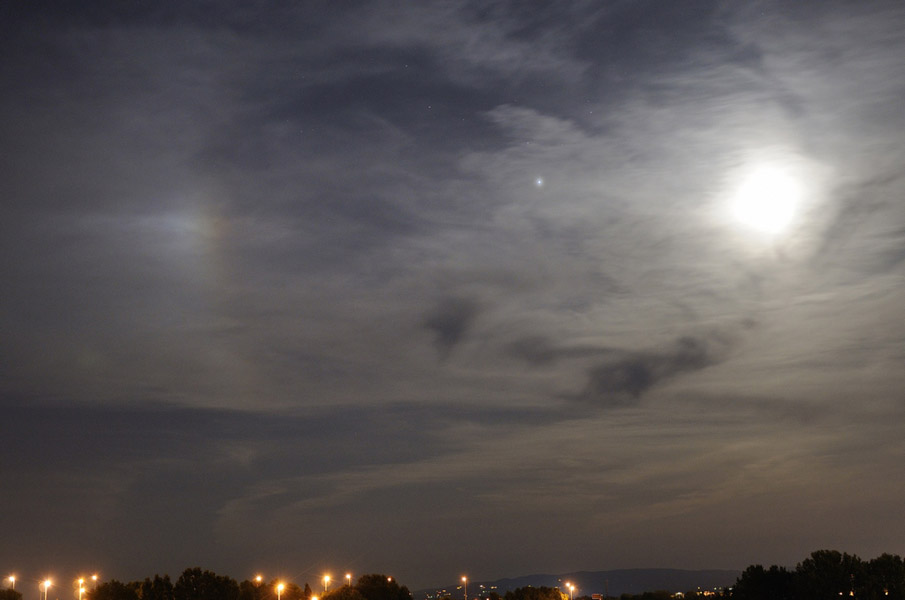Difference between revisions of "July 19, 2008"
(Created page with "__NOTOC__ =Dog of the Moon= <!-- ws:start:WikiTextHeadingRule:1:<h1> --> <!-- ws:start:WikiTextLocalImageRule:7:<img src="/file/view/LPOD-July19-08.jpg/35063217/...") |
|||
| Line 14: | Line 14: | ||
<strong>Related Links</strong><br /> | <strong>Related Links</strong><br /> | ||
<br /> | <br /> | ||
| + | <p><b>Yesterday's LPOD:</b> [[July 18, 2008|And the Walls Came Tumbling Down]] </p> | ||
| + | <p><b>Tomorrow's LPOD:</b> [[July 20, 2008|39 And Counting]] </p> | ||
<hr /> | <hr /> | ||
| − | |||
| − | |||
| − | |||
Revision as of 22:22, 4 February 2015
Dog of the Moon

image by Riccardo Di Nasso, Italy
Living in North Dakota for a decade provided a number of opportunities to witness the marvel of Sun dogs, bright spots of light refracted by ice crystal about 22° left and right of the Sun. On rare occasions an entire halo was visible linking the two dogs. But I have never been fortunate enough to see Moon dogs. But Riccardo has. The clouds contain the crystals, and here is one dog, with a hint of the arc of the connecting halo. Also well visible is a comet-like tail radiating away from the source of illumination. Moon dogs are rare, generally being detected near full Moon when the Moon is bright, but Riccardo's dogs (another of his shots shows them on both sides of the Moon) was taken two days before full. Don't confuse rare Moon dogs with more common - but still magical - lunar halos.
Chuck Wood
Technical Details
July 16, 2008. Nikon D300 with iso 200 at 35mm and f4,5 T 8 sec of exposure.
Related Links
Yesterday's LPOD: And the Walls Came Tumbling Down
Tomorrow's LPOD: 39 And Counting



